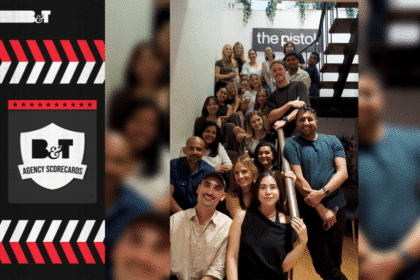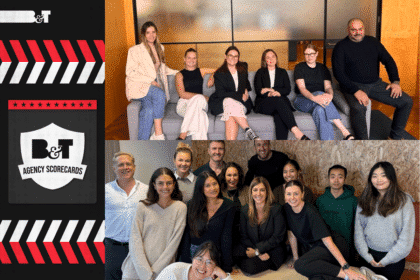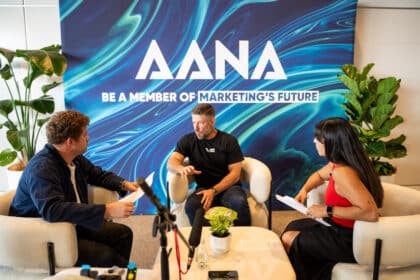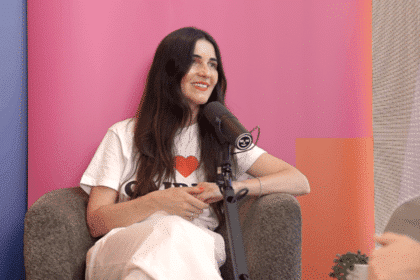Australian advertisers are embracing the flexibility of programmatic Digital Out of Home (DOOH), but there is a premium when compared on a CPM basis with direct buys.
The ability to trade OOH panels programmatically offers advertisers many benefits.
It allows brands to geo-target audiences by day parts and locations, allowing them to switch on and off ads with the sort of flexibility that previously did not exist in the channel.
Take Mad Mex as an example, the Mexican food chain that has a relatively small advertising budget – its annual budget is less than half a million dollars.
Mad Mex GM of marketing Nick Cook said the ability to switch on advertising near its restaurants when they need a marketing push – and conversely turn off ads near its branches that were above its targets – had allowed it to lift sales across the group of 70 restaurants by 9 per cent in a campaign with dynamic DOOH at its heart.
“Part of our business model is that we focus on lunch and dinner, we don’t do breakfast, we don’t do that 11am day part, we don’t do an afternoon day part, it’s just two key points during the day that we really need to smash it out of the park,” he said.
“So programmatic OOH was probably chosen because it aligns really well with what we need to accomplish as a business, we need to be flexible in how we buy our media.
“One of the challenges we have with more traditional OOH is that you were showing up at times when people aren’t actually available to purchase from you. We needed to find a way to maximise our time in market and…programmatic OOH offered a really great way for us to do that.”
Flexibility Vs Cheap
Programmatic OOH allows advertisers to be razor sharp in when and where their ads show up to consumers, but not without a premium cost.
Avenue C founder and managing partner Daniel Cutrone told B&T that on a CPM basis, programmatic DOOH inventory can cost up to twice as much as a traditional buy – an insertion order – without any of the tech involved, creating a price parity issue that can be hard to justify to clients.
“When we’ve started to bring programmatic out of home into the remit, the currency has changed with how much more programmatic inventory costs versus how we’ve been able to trade with direct in the past,” he said.
“That’s been a challenge, because when we talk about costs and the value exchange that delivers on the same outcomes we have delivered in the past (with direct buys). We do not have market parity between programmatic DOOH and direct, sometimes we are paying 100 to 200 per cent more from programmatic buys on a like-for-like basis.”
Price parity between programmatic inventory and direct sales was a sticking point at the conference, but not all buyers believe the price premium is an issue if the tactics of programmatic are used in the right way.
Initiative chief investment office Paige Wheaton told B&T that while traditional buying models still “retain a lot of value” there are nuances to how targeted DOOH trading should be used as part of a broader media campaign.
She said that how value is tracked and measured on direct buys may not always align between direct vs programmatic, and it may deter some advertisers from investing in programmatic, brands should not view programmatic trading as a “throwing a 10 per cent share of OOH investment into it for the sake of it”.
“I do agree it can be a more expensive way to buy, but my point of view is that it very much comes down to the tactics of the campaign.
“The usage of programmatic OOH needs to be intentional, which warrants the cost premium that it can come with. I would have the same point of view across digital display. You have the ability to eliminate wastage and, therefore, the way that we measure an audience can be quite different.
“If people are comparing a mass CPM that does not necessarily just target your target audience that targets anyone that engages with essentially, naturally it’s going to be cheaper than being very hyper-targeted to a specific audience. And naturally, that does come at a premium.
“For me, it’s about making sure agencies are recommending OOH as a channel are really strategic in the way that programmatic is being utilised and not using it for the sake of it, because that is more expensive and that could be wasteful of client dollars. It’s about balance… and having a transparent conversation. It’s easy to say that things are more expensive, but you need to dig into the why and that you’re using it appropriately to make the cost worthwhile.”
JCDecaux national programmatic director Brad Palmer said that there is a reason why programmatic inventory has a “CPM premium”.
“It’s because you are spending less money, cherry-picking assets line by line. If we look at our small format panels, as you would get in more traditional campaigns, you’re buying these panels to be live 24/7 and have a specific share of time which is rigid. Whereas with programmatic, you get the complete flexibility to buy any panel, whatever time you want, and the lower volume level allows you to sort of have this ultimate flexibility,” he said.
“We sell it into networks from a small format perspective; larger formats are a little bit more line by line. One of the best ways to look at it is the Costco versus IGA difference. You’re buying big bulk from Costco, but then if you go to IGA due to the flexibility and smaller basket size then you’re aware that there is a premium on the cost due to the convenience, flexibility and generally lower basket size.”
Palmer, Wheaton and Cutrone all agree that more education is still needed to help the market appreciate the value of programmatic DOOH versus a direct (IO) buy, but Australia is one of the more progressive markets that will utilise flexible trading within a broader out of home media mix.








